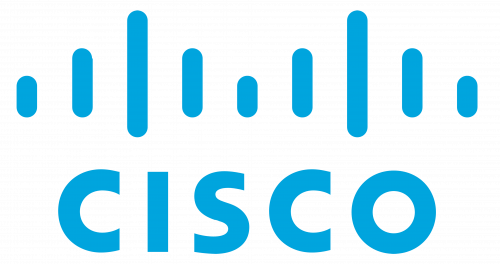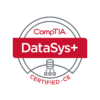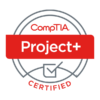Non esitare a chiedere per ulteriori date, modalità o lingua di erogazione diversa dall'italiano.
| Modalità | Durata | Data di inizio |
|---|---|---|
| Virtual Class | Estensivo 60 ore in appuntamenti da 4 ore | 26.5.2025 |
| Virtual Class | Estensivo 60 ore in appuntamenti da 4 ore | 29.9.2025 |
Cosa imparerai
Il corso Cisco Networking Essentials è pensato per preparare i partecipanti a sostenere l’esame Cisco 100-150 Certified Support Technician (CCST Networking).
Durante il corso affronterai i concetti fondamentali del networking: come funzionano le reti, a cosa servono i vari dispositivi di rete e quali applicazioni e protocolli vengono utilizzati. Imparerai ad assegnare indirizzi IP sia manualmente che in modo automatico, comprendendo come vengono calcolati e distribuiti. Verrà analizzata anche la collaborazione tra i vari livelli di rete (fisico, data link e rete) per garantire la connessione tra i dispositivi.
Inoltre, gli studenti che frequentano il corso CCST acquisiranno competenze base per diagnosticare e risolvere problemi di rete, sia localmente che da remoto. Si affronteranno anche i principi fondamentali della sicurezza informatica, parlando di minacce e attacchi su diverse piattaforme come applicazioni, sistemi wireless, dispositivi mobili e ambienti cyber. Il corso include anche le basi per configurare reti wireless sicure.
Il percorso è suddiviso in 39 moduli, ognuno dedicato a un argomento specifico. Le attività sono pensate per stimolare il pensiero critico, la collaborazione e l’applicazione pratica delle conoscenze. Saranno presenti quiz, laboratori pratici e simulazioni per verificare la comprensione dei contenuti e offrire un feedback immediato.
Il linguaggio utilizzato nel corso è adatto a studenti di scuola superiore, per garantire che i concetti siano chiari e accessibili. L’uso di strumenti multimediali come video, quiz e attività pratiche consente di adattare l’insegnamento a diversi stili di apprendimento e aiuta a sviluppare abilità di risoluzione dei problemi.
In sintesi, il corso CCST Networking fornisce una panoramica completa dei principi di rete, competenze pratiche e nozioni di sicurezza, ideale per chi desidera intraprendere una carriera nel settore del networking.
Cosa aspettarsi dall’esame
Ecco alcune informazioni sull’esame Cisco 100-150 Certified Support Technician (CCST Networking):
-
Lingue disponibili: Inglese, Arabo, Spagnolo, Francese, Giapponese, Portoghese
-
Durata: 50 minuti
-
Numero di domande: 40
-
Tipologie di quesiti: Scelte multiple, Drag & Drop
Clicca qui per consultare gli argomenti dell’esame
Destinatari
Studenti delle scuole superiori, istituti tecnici, corsi biennali, universitari (sia in ambito IT che non IT), e persone in cerca di un cambio di carriera.
Prerequisiti
Per partecipare al corso Cisco CCST Networking è sufficiente avere una conoscenza base nell’utilizzo del computer e della navigazione su internet.
Panoramica del corso
Obiettivi
- Tipi di rete e connessioni
- Connessione Wi-Fi su dispositivi mobili
- Router wireless e sicurezza internet
- Protocolli e standard di rete
- Cavi e mezzi di trasmissione
- Reti Ethernet
- Indirizzi IP: struttura e uso
- IPv4 vs IPv6
- Server DHCP
- Router tra reti diverse
- Protocollo ARP
- LAN completamente connessa
- Accesso ai servizi internet
- Servizi del livello applicazione
- Test e diagnosi di rete
- Design gerarchico di rete
- Virtualizzazione e cloud
- Sistemi numerici (decimale, binario, esadecimale)
- Ethernet con switch
- Comunicazioni fisiche e logiche
- Subnetting e IPv6
- Neighbor Discovery (ND)
- Router e switch Cisco
- Risoluzione problemi di rete
- Minacce e attacchi comuni
- Accesso sicuro degli utenti
Course outline
Module 1. Communications in a Connected World
1.1 Network Types
1.2 Data Transmission
1.3 Bandwidth and Throughput
Module 2. Network Components, Types, and Connections
2.1 Clients and Servers
2.2 Network Components
2.3 ISP Connectivity Options
Module 3. Wireless and Mobile Networks
3.1 Wireless Networks
3.2 Mobile Device Connectivity
Module 4. Build a Home Network
4.1 Home Network Basics
4.2 Network Technologies in the Home
4.3 Wireless Standards Describe Wi-Fi.
4.4 Set Up a Home Router
Module 5. Communication Principles
5.1 Communication Protocols
5.2 Communication Standards
5.3 Network Communication Models
Module 6. Network Media
6.1 Network Media Types
Module 7. The Access Layer
7.1 Encapsulation and the Ethernet Frame
7.2 The Access Layer
Module 8. The Internet Protocol
8.1 Purpose of an IPv4 Address
8.2 The IPv4 Address Structure
Module 9. IPv4 and Network Segmentation
9.1 IPv4 Unicast, Broadcast, and Multicast
9.2 Types of IPv4 Addresses
9.3 Network Segmentation
Module 10. IPv6 Addressing Formats and Rules
10.1 IPv4 Issues
10.2 IPv6 Addressing
Module 11. Dynamic Addressing with DHCP
11.1 Static and Dynamic Addressing
11.2 DHCPv4 Configuration
Module 12. Gateways to Other Networks
12.1 Network Boundaries
12.2 Network Address Translation
Module 13. The ARP Process
13.1 MAC and IP
13.2 Broadcast Containment
Module 14. Routing Between Networks
14.4 The Need for Routing
14.5 The Routing Table
14.6 Create a LAN
Module 15. TCP and UDP
15.1 TCP and UDP
15.2 Port Numbers
Module 16. Application Layer Services
16.1 The Client Server Relationship
16.2 Network Application Services
16.3 Domain Name System
16.4 Web Clients and Servers
16.5 FTP Clients and Servers
16.6 Virtual Terminals
16.7 Email and Messaging
Module 17. Network Testing Utilities
17.1 Troubleshooting Commands
Module 18. Network Design
18.1 Reliable Networks
18.2 Hierarchical Network Design
Module 19. Cloud and Virtualization
19.1 Cloud and Cloud Services
19.2 Virtualization
Module 20. Number Systems
20.1 Binary Number System
20.2 Hexadecimal Number System
Module 21. Ethernet Switching
21.1 Ethernet
21.2 Ethernet Frames
21.3 Ethernet MAC Address
21.4 The MAC Address Table
Module 22. Network Layer
22.1 Network Layer Characteristics
22.2 IPv4 Packet
22.3 IPv6 Packet
Module 23. IPv4 Address Structure
23.1 IPv4 Address Structure
Module 24. Address Resolution
24.1 ARP
Module 25. IP Addressing Services
25.1 DNS Services
25.2 DHCP Services
Module 26. Transport Layer
26.1 Transportation of Data
26.2 TCP Overview
26.3 UDP Overview
26.4 Port Numbers
26.5 TCP Communication Process
26.6 Reliability and Flow Control
26.7 UDP Communication
Module 27. The Cisco IOS Command Line
27.1 IOS Navigation
27.2 The Command Structure
27.3 View Device Information
Module 28. Build a Small Cisco Network
28.1 Basic Switch Configuration
28.2 Configure Initial Router Settings
28.3 Secure the Devices
28.4 Configure the Default Gateway
Module 29. ICMP
29.1 ICMP Messages
29.2 Ping and Traceroute
Module 30. Physical Layer
30.1 Purpose of the Physical Layer
30.2 Physical Layer Characteristics
30.3 Copper Cabling
30.4 UTP Cabling
30.5 Fiber-Optic Cabling
Module 31. Data Link Layer
31.1 Topologies
31.2 Media Access Control Methods
Module 32. Routing at the Network Layer
32.1 How a Host Routes
32.2 Routing Tables
Module 33. IPv6 Addressing
33.1 IPv6 Address Types
33.2 GUA and LLA Static Configuration
33.3 Dynamic Addressing for IPv6 GUAs
33.4 Dynamic Addressing for IPv6 LLAs
33.5 IPv6 Multicast Addresses
Module 34. IPv6 Neighbor Discovery
34.1 Neighbor Discovery Operation
Module 35. Cisco Switches and Routers
35.1 Cisco Switches
35.2 Switch Speeds and Forwarding Methods
35.3 Switch Boot Process Describe the Cisco LAN switch boot process.
35.4 Cisco Routers
35.5 Router Boot Process
Module 36. Troubleshoot Common Network Problems
36.1 The Troubleshooting Process
36.2 Physical Layer Problems
36.3 Troubleshoot Wireless Issues
36.4 Common Internet Connectivity Issues
36.5 Customer Support
Module 37. Network Support
37.1 Diagnostics and Troubleshooting Methodologies
37.2 Network Documentation
37.3 Help Desks
37.4 Troubleshoot Endpoint Connectivity
37.5 Troubleshoot a Network
37.6 Troubleshoot Connectivity Remotely
Module 38. Cybersecurity Threats, Vulnerabilities, and Attacks
38.1 Common Threats
38.2 Deception
38.3 Cyber Attacks
38.4 Wireless and Mobile Device Attacks
38.5 Application Attacks Describe types of application attacks.
Module 39. Network Security Configure secure user access on a network.
39.1 Security Foundations Explain foundational security concepts.
39.2 Access Control Configure access control.
39.3 Defending Systems and Devices
39.4 Antimalware Protection
39.5 Firewalls and Host-Based Intrusion Prevention
39.6 Secure Wireless Access




